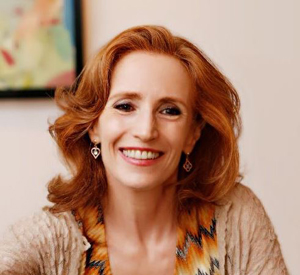Q&A with Dominique Levy

Coming from a family that created two of France’s renowned haute couture fashion houses (Ted Lapidus and Torrent), Dominique Levy is more than familiar with the luxury sector. In 1983, she created the first startup company on the campus of the école des Hautes Etudes Commerciales de Paris, with a focus on developing an extensive database for haute couture houses, enabling them to build their licensing businesses. In 1989, she became the business partner of Richard Attias, specializing in creating cultural, political, and economic events for luxury brands in France. In 1997, she launched a new enterprise, NCI, specializing in new technology. The company was responsible for building the first vocal telephone guide for all mobile phones of the museums of the city of Paris and the National Office of Historical Monuments in France. It was in 2006 when she and her husband, Sylvain Levy, created their private collection of Chinese Contemporary Art, entitled dslcollection. The aim of the collection is to promote the Chinese artistic scene, and to reach as much of the public as possible, through both traditional communication as well as digital technology. In 2014, dslcollection was recognized by Larry’s List as one of the top three most visible private collections online. In May this year, dslcollection also received the inaugural Asia Prize from The Art Newspaper.
Q: How and when did you start collecting art? Can you tell us a bit about the changes in the art market that you’ve witnessed over the years as a collector, and how they have affected your collecting?
A: For more than 25 years, collecting has been a long and exciting journey that took us from mid-20th century furniture and pictures to Chinese Contemporary Art and the digital age. The art world is changing drastically. The players are not at all the same. They now come from all over the world. The way people collect is totally different, with an important part played by auctions and fairs. The reasons behind collecting are now more about money, trophies, and lifestyle.
Directly, it has not affected the way we collect, which is based on spending a lot of time visiting studios, galleries, and museums. Indirectly, we are facing much bigger competition on works of great quality.
Q: How do you decide which artworks to add to your collection? Can you also tell us about the decision to replace some of the works?
A: A key concept of the collection is our limited acquisition policy. Based on the idea of “less is more,” we cap the number of works in the collection to around 250 to 300, a self-imposed limitation vigorously held to reflect the changing times and tastes of the owners.
Whenever we decide that a work is no longer relevant, we take it out of the collection and add new ones. This way, we make sure that the collection stays fresh. It is very much an organic process, where the collection is continually building, sculpting, gathering, and redefining itself against the dynamic world of Contemporary Art in China.
Q: Today, Chinese collectors have become a significant force in the international art market. How do you think Chinese collectors are different from Western collectors?
A: I think that there are fewer and fewer differences. All collectors belong to a global world: they go to the same galleries, fairs, and auction houses to build their collections.
Q: Your new dslcollection ebook shows an impressive collection of 350 works. With so many new museums opening in China every year, have you thought about establishing physical museums at some point?
A: Opening a space is a gesture of generosity, and a way to serve the community in general. To do so means investing a lot of money and energy. Consequently, I have great respect for the collectors who are opening these spaces. What is important is how, in the long-term, you can sustain it. We have decided not to open a museum for a number of reasons.
Firstly, I think that a private collection is a personal adventure, and by opening a museum, you institutionalize yourself. It means that you lose your freedom to collect whatever you want. I am proud of my mistakes!
Financially speaking, it is a big commitment, especially because you are in competition with public institutions. For example, in China, a public institution does not have to pay taxes on an imported work. To be able to attract an audience, you need to have temporary exhibitions, and this becomes another big issue.
That brings me to a distinguishing feature of the dslcollection: our strong online presence. Rather than relying on “bricks and mortar,” we follow the principle of “bricks and clicks.” Today, by mixing a certain number of tools, like loaning works or using the digital world, you can naturally reach a very large audience in a different way, without having the burden of managing a fixed place.
We are constantly trying to find new ways to share the collection, through social media, such as Facebook and LinkedIn, as well as through our virtual exhibitions. We were also one of the first private collections to develop an iPad app. All of this reflects our vision for a nomadic collection. Nevertheless, I strongly believe that the more we go digital, the more we need museums. The problem is: What is the definition of a museum in the 21st century?
Q: From your perspective, what is the role of a collector in the art world? What kinds of relationships do collectors have with museums, galleries, auction houses, art fairs, etc.?
A: I think that, more and more, the collector has a crucial role, firstly because of money. But what is more important is the fact is that only collectors take risks to collect emerging artists.
In China, and more generally in the emerging art world, the collectors are the only ones supporting the Contemporary Art scenes.
As for relationships, I think the art world is like a chain where everybody needs everybody, it’s like “an eco-system.” •







